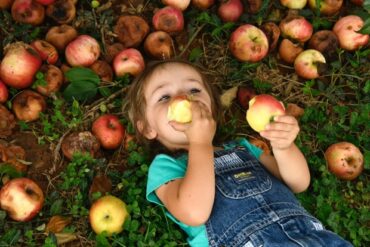Creative Arts and Crafts Ideas to Spark Joy in Your 2-Year-Old
Hello there, amazing parents and caregivers! Are you ready to dive into a world of colors, textures, and giggles with your adorable 2-year-olds? Arts and crafts aren’t just a fun way to pass the time; they’re a fantastic avenue for little ones to develop their fine motor skills, embrace their creativity, and bond with you. So grab your glitter, prepare your paintbrushes, and let’s get crafty!
Why Arts and Crafts are Great for 2-Year-Olds
Before we roll up our sleeves and get into the nitty-gritty of paint and paper, let’s talk about why arts and crafts are super beneficial for toddlers. Engaging in arts and crafts helps 2-year-olds enhance their:
- Motor Skills: Small hands need practice to develop dexterity and control. Squeezing glue bottles, cutting shapes (with your help, of course!), and drawing lines all help to fine-tune those cute little fingers.
- Cognitive Development: Arts and crafts encourage problem-solving and can help toddlers begin to understand concepts like size, shape, and spatial relationships.
- Sensory Exploration: Textures and colors galore! Toddlers learn so much about the world through their senses, and getting messy with materials is a fantastic way to explore.
- Social Skills: Crafting together can bolster sharing and cooperation, making it a great group activity for play dates.
- Emotional Expression: Art allows children to express their feelings in a safe and creative way, which helps them understand and manage their emotions better.
Setting Up for Success
Before we jump into the specific activities, let’s set yourself up for a fun and stress-free crafting session:
- Space: Find a place that’s easy to clean. Covering the table with newspaper or a wipe-clean cloth will save some cleaning time later.
- Materials: Keep it simple – toddlers can be overwhelmed by too many options. A few basic, washable items will do the trick.
- Clothing: Expect messes and embrace them! Dress your toddler in old clothes or a smock that can handle the splashes and spills.
- Supervision: Always keep an eye on your child, especially around non-toxic but not-edible materials and small objects that could be a choking hazard.
Easy and Engaging Craft Ideas
Right, let’s roll out some irresistibly fun activities! Here’s a starter list, designed with 2-year-olds in mind:
Finger Painting Extravaganza
Unleash a rainbow with some non-toxic, washable finger paints. Give your toddler a sheet of large paper and let them explore. It’s all about the process, not the end product!
Cereal Box Houses
Recycle those cereal boxes into cute little houses. Cut out doors and windows, and let your toddler decorate them with markers, fabric scraps, and stickers.
Flourishing with Flowers
Combine nature and art by creating a collage. Use flower petals, leaves, and glue to stick them on paper, creating a delightful natural work of art.
Remember, at this age, it’s all about exploration and sensory play. Instructions need to be minimal and safety paramount. Don’t worry about the mess or the final look of the craft; instead, focus on the smiles and the joyful squishing of clay or paint between those tiny fingers.
And that’s just the start, dear parents! Keep on reading for even more fabulous arts and crafts ideas that will keep your 2-year-old entertained and developing beautifully through creative play. After all, every scribble, every sticky bit of paper, every bright splotch of color marks another step in your child’s journey of discovery and learning. So, let’s continue crafting our way to happy memories!

5 Essential Tips for Parents Preparing for Arts and Crafts with 2-Year-Olds
Embarking on an arts and crafts adventure with your two-year-old can be as enriching as it is delightful. To ensure that you are well-prepared for this creative journey, here are five things to keep in mind:
1. Safety First
Ensure that all materials are non-toxic and age-appropriate. It’s easy for toddlers to put things in their mouths, so everything from paint to clay should be safe if ingested in small amounts. Store sharp tools and choking hazards out of reach, and keep a watchful eye on your child during craft time.
2. Embrace the Mess
Accept that crafting is a messy venture, especially with little ones. Lay down washable drop cloths or old sheets, and have a wet cloth handy for quick cleanups. This approach not only eases your stress but also allows your child to create uninhibitedly.
3. Simplify the Process
Choose simple projects with few steps, and don’t worry about perfection. The goal is to enjoy the process together, not to create a masterpiece. Break down each activity into small, manageable stages that your 2-year-old can follow easily.
4. Encourage Self-Expression
Allow your child to lead the way in their arts and crafts exploration. Offer a variety of colors and materials, and let them express themselves however they please. Celebrate their creations and the unique way they see the world.
5. Prepare for a Learning Curve
Every child develops at their own pace. Some may show great interest in drawing, while others prefer molding shapes or pasting things together. Be patient and provide encouragement. Remember, the key is to foster a love for creativity, not to reach certain milestones.
Whether you’re a seasoned DIY-er or a novice at arts and crafts, sharing these moments with your child will create memories to treasure. With your guidance and these handy tips, you’re all set to make the world of arts and crafts an exciting place for your 2-year-old. Enjoy the myriad of benefits that come with these activities, from developmental growth to the sheer joy of spending quality time together. Let the crafting commence!
See more great Things to Do with Kids in New Zealand here. For more information see here
Disclaimer
The articles available via our website provide general information only and we strongly urge readers to exercise caution and conduct their own thorough research and fact-checking. The information presented should not be taken as absolute truth, and, to the maximum extent permitted by law, we will not be held liable for any inaccuracies or errors in the content. It is essential for individuals to independently verify and validate the information before making any decisions or taking any actions based on the articles.




